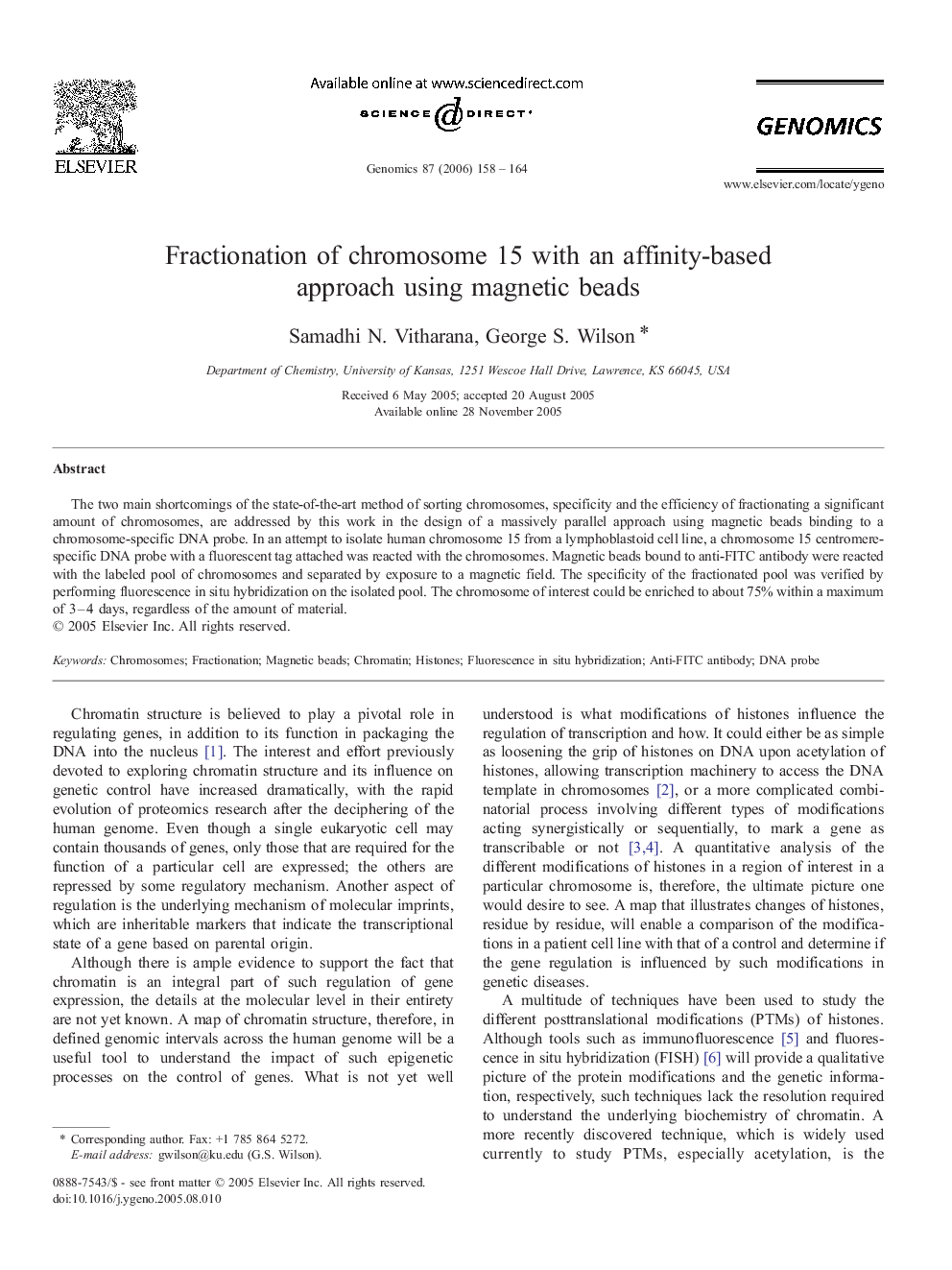| Article ID | Journal | Published Year | Pages | File Type |
|---|---|---|---|---|
| 2821788 | Genomics | 2006 | 7 Pages |
The two main shortcomings of the state-of-the-art method of sorting chromosomes, specificity and the efficiency of fractionating a significant amount of chromosomes, are addressed by this work in the design of a massively parallel approach using magnetic beads binding to a chromosome-specific DNA probe. In an attempt to isolate human chromosome 15 from a lymphoblastoid cell line, a chromosome 15 centromere-specific DNA probe with a fluorescent tag attached was reacted with the chromosomes. Magnetic beads bound to anti-FITC antibody were reacted with the labeled pool of chromosomes and separated by exposure to a magnetic field. The specificity of the fractionated pool was verified by performing fluorescence in situ hybridization on the isolated pool. The chromosome of interest could be enriched to about 75% within a maximum of 3–4 days, regardless of the amount of material.
